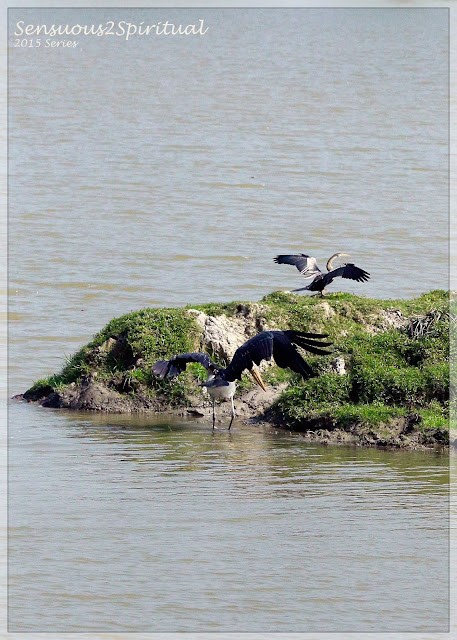Growing up on a staple read of rich English literature, my world of imagination has memories of 'an overgrown hedge of pink bougainvillea climbing over a white picket fence', one I cherish very dearly. An image of my juvenile mind that I keep experimenting with even today.
How often have I romanticize a steaming cup of tea under the shadow of this overgrown pink hedge, ah! the drama...
I've had a couple of bougainvillea plants at my home for nearly over a decade, ones that have matured into healthy seasonal plants, which I will doctor to transform into a dreamy English hedge as my inspiration stems from there for this winter. My attempts are to get closest possible to the visual image of this European Countryside. A project I injected this summer, re-arranged my terrace garden to create my dream ambiance.
First I set up the support for the hedge with some zig-zag wire lines crisscrossing over the open face of our terrace, hoping that this will enable the young shoots to get play while they follow the lines as they grow. Wont it be amazing to stand under a pink bougainvillea sky?
Next, I used the sides of my Red Door to support the climb for my mature plants. Gave the bottom half of the plants some good snips. I allowed these plants to soak in the monsoon moisture all through last season of rain and as each new off-shoot grew, the ones around the red door got their trim in order for the plants height to grow. I used the newer shoots to twirl around the zig-zag line so that I get closest to my desired hedge formation as the season of bloom nears.
Like they say, patience is a virtue of success. For me, the results thus far are quiet encouraging. Here is the view of my mini bougainvillea hedge as the first blooms surface. I am quiet looking forward for this entire season to make that English dream come true!
Stay with the me through this season as I bring alive many more posts through the S2S chronicles.
Xoxo,
S2S
How often have I romanticize a steaming cup of tea under the shadow of this overgrown pink hedge, ah! the drama...
I've had a couple of bougainvillea plants at my home for nearly over a decade, ones that have matured into healthy seasonal plants, which I will doctor to transform into a dreamy English hedge as my inspiration stems from there for this winter. My attempts are to get closest possible to the visual image of this European Countryside. A project I injected this summer, re-arranged my terrace garden to create my dream ambiance.
First I set up the support for the hedge with some zig-zag wire lines crisscrossing over the open face of our terrace, hoping that this will enable the young shoots to get play while they follow the lines as they grow. Wont it be amazing to stand under a pink bougainvillea sky?
Next, I used the sides of my Red Door to support the climb for my mature plants. Gave the bottom half of the plants some good snips. I allowed these plants to soak in the monsoon moisture all through last season of rain and as each new off-shoot grew, the ones around the red door got their trim in order for the plants height to grow. I used the newer shoots to twirl around the zig-zag line so that I get closest to my desired hedge formation as the season of bloom nears.
Like they say, patience is a virtue of success. For me, the results thus far are quiet encouraging. Here is the view of my mini bougainvillea hedge as the first blooms surface. I am quiet looking forward for this entire season to make that English dream come true!
Stay with the me through this season as I bring alive many more posts through the S2S chronicles.
Xoxo,
S2S







































